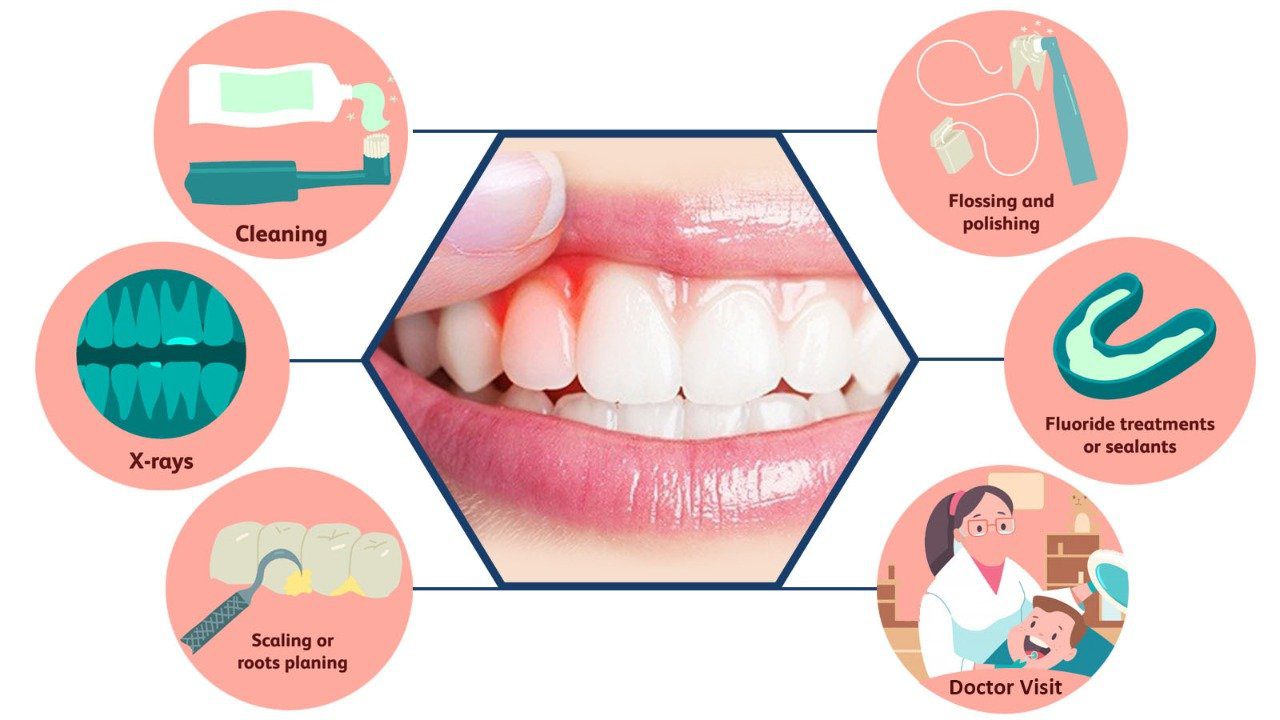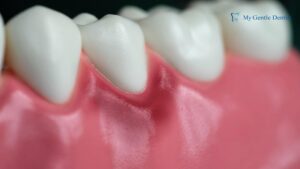Do your gums bleed while brushing your teeth or does your teeth feel sensitive after consuming any food?
If yes, then you probably have some gum disease. If your gum disease symptoms are somewhat mild, then it’s probably gingivitis.
Gingivitis is a mild type of gum disease. In this, only your gums are tainted. However, if it is left untreated, then the infection can spread below the gum line and into the bone. And, gradually, it progresses into periodontitis, a more severe form of gum disease.
That’s why, here in this blog, we will be walking you through all the necessary information you should have up your sleeve regarding Gingivitis gum disease symptoms, treatment, and prevention; so that you can save yourself from having a really hard time that might come your way because of this gum disease.
So, without further ado, let’s read it out!
What is Gingivitis?
Periodontal disorder is characterised by gingivitis. Gingivitis isn’t the origin of all periodontal disorders, but it’s where they all begin. Gingivitis is the first stage of gum disease, so it’s important to treat it in the early stage.
In a nutshell, it is a gum fungus. If it remains untreated, it can spread to the underlying areas like alveolar bone and periodontal ligament, which provide teeth support.
Also, ignorance towards gingivitis can worsen the situation even more and put you at risk of losing your natural teeth. This is because it can lead to periodontitis, a more advanced gum disease that affects all of the supporting tissues.
The good news is it can be treated and your dental health can be maintained by preventing the adversity of the gum disease.
How? To find out, continue reading further!
What Causes Gingivitis Gum Disease?
Gingivitis is a very early stage of adverse gum disease. It can be completely treated by a quick process. However, it becomes very significant to understand what made it occur in the very first place.
Plaque, much like tooth decay, is the main cause of this gum disease. It is that sticky, clear film on your teeth. It is made up of millions of bacteria that are constantly growing on your teeth and gums. And if you don’t brush and floss regularly, it will create toxins. These poisons then irritate the gum tissues, causing gingivitis to occur.
Getting gingivitis treatment sooner is the only way to cure periodontal disease. You can only reverse the damage during this stage of gum disease. Otherwise, once the bacteria has spread to the bone and surrounding tissues, you may have no choice but to seek more advanced care, which could include dental restoration.
So, it’s better to watch out for the gum disease symptoms given below.
What are the symptoms of gingivitis?
One should keep an eye out for the following signs and symptoms of gingivitis:
- Redness on the gums.
- Gums that are swollen, soft, and/or inflamed
- Bleeding while brushing or flossing your teeth
- Gums that are receding (when the gums pull away from the teeth)
- Pockets of gum
- Having bad breath and/or a bad taste in your mouth
What are some of the best treatments for gingivitis?
Gingivitis Scaling and Polishing: A Primary Treatment Method
Scaling and polishing the teeth is one of the first treatments for gingivitis. This not only aids in the removal of current and new plaque but also tartar. Tartar is the hardened bacteria left behind by plaque accumulation.
This procedure is similar to brushing and flossing, with the added benefit of tartar removal. It’s a more thorough washing that helps to keep bacteria from infecting the gums and bones.
Special tools can be used by the dentist or dental hygienist to clean away these undesirable formations on the teeth. If there is too much tartar, you can need to repeat the scaling and polishing procedure for a few more times.
Planning the Roots for a Deeper Clean
Your dentist may already suggest root planing if the bacteria have penetrated deep into your teeth and down to the gums. This is also known as “debridement,” and it is a more extensive cleaning aimed at the teeth roots.
It can be a bit uncomfortable, as it involves digging deep into the inner workings of your affected tooth. However, it’s worth doing, because it cleans out all the bacteria and plaque deposited deep down your gums.
Periodontal Surgery:
Periodontal surgery may be needed for people who have advanced gum disease. If you go for treatment immediately after witnessing gum disease symptoms, you probably won’t need this. However, if surgery is needed, the dentist will discuss with you the entire procedure in depth and detail.
Now choosing a clinic for gum disease treatments in North Brisbane, and all is much easier since My Gentle Dentist clinics have the most 5-star reviews on Google from their clients. So, if you are looking for incredible gum disease treatments near Arana Hills, Brookside, Mitchelton, Everton Hills, Everton Park, Ferny Grove, Ferny Hills, Keperra, Stafford Heights, then do consider your local clinic, My Gentle Dentist at Arana Hills, or Brookside to get the best-ever quality gum treatment services.
Don’t ever ignore the gum disease symptoms, as they can worsen your dental health in a big way. If you think you have gingivitis, please contact us right away. We’ll take a closer look at the condition of your teeth and gums and explore the best care options with you, for you!





